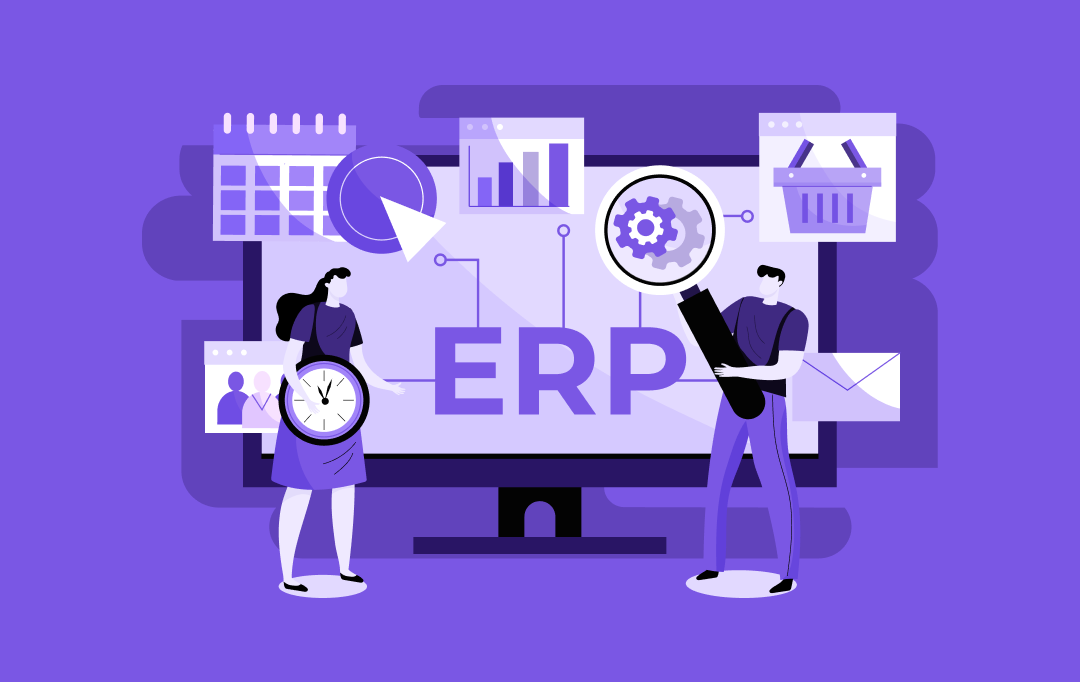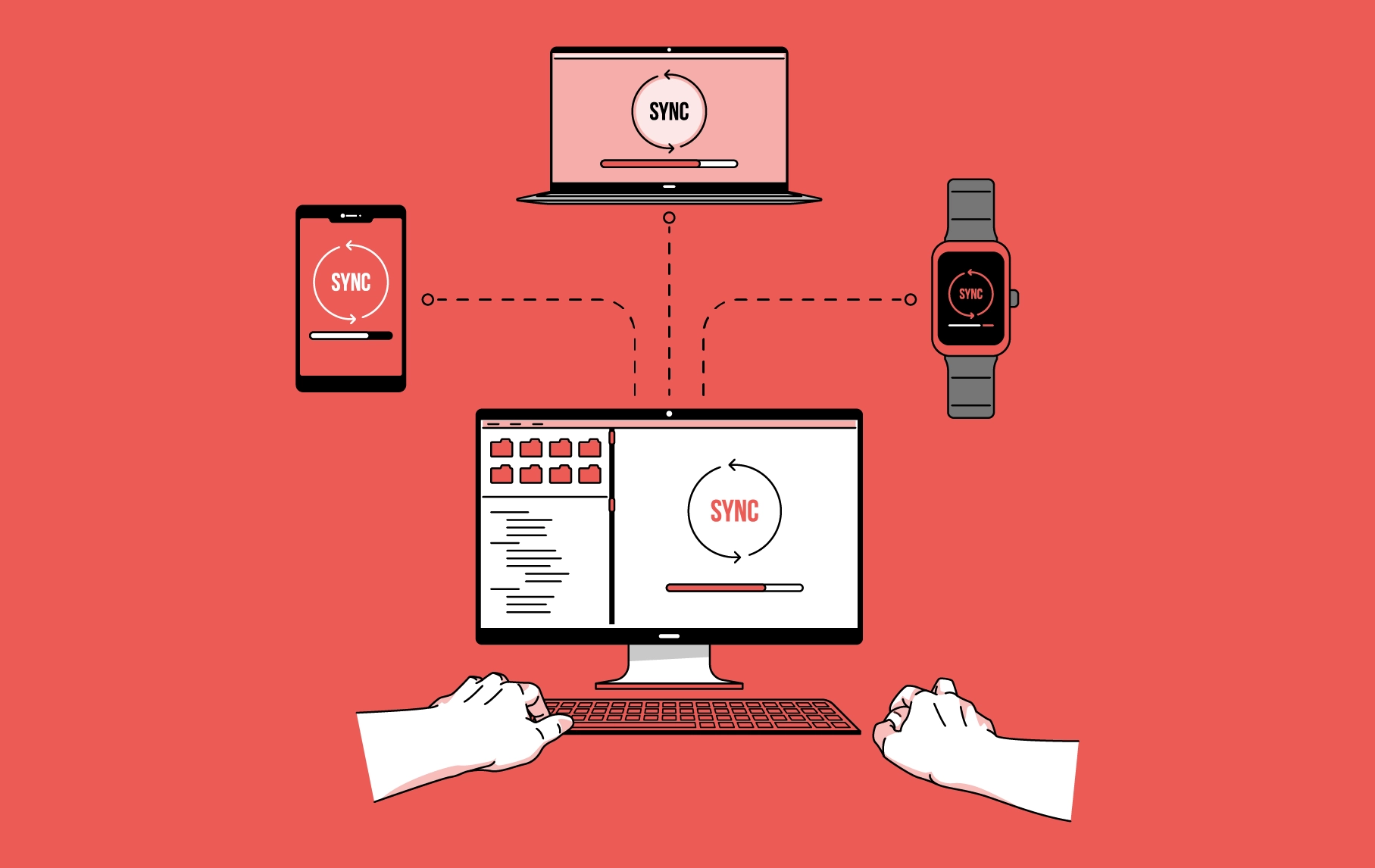- Understanding Enterprise Content Management Software for Businesses
- Benefits of Implementing ECM Systems
- Access Control
- Audit Trails
- Secure Sharing
- Anomaly Detection
- Secure Deletion
- Must-Have Features of an Enterprise Content Management System
- Document Management and Indexing
- Access Control and Permissions
- Audit Trails and Reporting
- Workflow Automation and Management
- Records Management and Retention Policies
- Search and Retrieval Capabilities
- Mobile Access and Compatibility
- Data Capture and Scanning
- Collaboration and Sharing Tools
- Factors to Consider When Building an ECM System
- User Needs and Requirements
- Security and Compliance Standards
- Scalability and System Flexibility
- Integration with Existing Software and Systems
- Budget and Cost-Effectiveness
- Tips for Successful ECM Software Development and Implementation
- Define Clear Goals and Objectives
- Focus on User Training and Adoption
- Prioritize Data Security and Compliance
- Plan for Scalability and Future Growth
- Secure the Digital Future of Your Enterprise with Appinventiv's Advanced ECM Software Capabilities
- FAQS
Enterprise Content Management (ECM) software is changing how businesses handle their information in this digital era. With the global data expected to grow to 180 zettabytes by 2025, as per a Statista report, the importance of efficiently managing content is more crucial than ever.
ECM software provides an all-in-one solution, allowing organizations to capture, store, manage, and analyze various content types, such as documents, emails, and multimedia files, in one central place. The software streamlines data storage and improves retrieval processes, facilitating a more robust information governance framework.
The software is capable of significantly enhancing document security and ensures regulatory compliance, serving as a cornerstone in managing corporate data effectively. Implementing such systems is crucial for reducing risks associated with data breaches and non-compliance.
In this blog, we delve into the various benefits of ECM software development and how it plays a pivotal role in document security and compliance.
Understanding Enterprise Content Management Software for Businesses
Enterprise Content Management (ECM) software is a powerful tool designed to help large-scale businesses efficiently manage their vast amounts of content. The main goal of ECM software is to streamline information management, ensuring that every piece of content can be found quickly and used effectively.
By adopting ECM software, businesses can expect to see significant improvements in operational efficiency. For instance, employees can spend less time searching for information and more time on value-added tasks, leading to increased productivity.
In addition to this, by ensuring that content is stored in a compliant and secure manner, ECM software helps businesses mitigate risks and adhere to regulatory requirements.
According to a recent report, the ECM market size is expected to reach $37.7 billion by 2026, witnessing a CAGR of 9.1% from 2021 to 2026. This highlights the growing recognition of its value across various industries. This surge in the ECM market size underscores the critical role that efficient content management plays in today’s digital landscape.

Benefits of Implementing ECM Systems
Enterprise Content Management (ECM) systems are transforming the landscape of document processing and data management. They ensure a seamless flow of information within organizations. Here are the multiple benefits of ECM software development.

Access Control
Implementing ECM systems revolutionizes how organizations manage and protect their data. One key feature is enhanced access control, allowing only authorized personnel to view or modify sensitive information. This aspect underscores the benefits of ECM software, ensuring data integrity and preventing unauthorized access. By tailoring access rights, ECM systems facilitate a secure, regulated environment for document management.
Such precise control over data access significantly mitigates the risk of data breaches, reinforcing the importance of ECM in modern data security strategies. These systems are indispensable for businesses aiming to safeguard their information assets efficiently.
Audit Trails
Implementing ECM systems significantly enhances document security and compliance. With ECM software, organizations gain the ability to create comprehensive audit trails. These trails meticulously record every interaction with a document, ensuring transparency and accountability. This feature is crucial for meeting regulatory requirements and maintaining data integrity.
Audit trails also help in quickly identifying any unauthorized document access or modifications. As a result, businesses can more effectively safeguard sensitive information and enforce strict data security policies. This capability underscores the importance of ECM systems in modern data management strategies.
Also Read: How can Enterprises Chart DT-driven Compliance Challenges
Secure Sharing
Secure sharing is a fundamental aspect of document management systems and one of the major benefits of enterprise content management. It ensures that sensitive information is distributed safely and efficiently. This process is integral to the role of ECM software development, which facilitates collaboration without compromising data security.
By implementing robust encryption and access controls, ECM systems enable users to share documents with confidence. Such features are essential for maintaining the confidentiality of corporate information. Secure sharing capabilities are indispensable for businesses looking to protect their data assets.
Anomaly Detection
Anomaly detection is critical for maintaining the security of digital documents. Through advanced monitoring, ECM document management systems can identify unusual patterns or activities. This capability is crucial for preempting potential security breaches or compliance issues. By automatically flagging irregularities, such systems allow for immediate investigation and response.
Anomaly detection underscores the sophistication of ECM technologies in safeguarding information. It ensures that threats are recognized early, minimizing the risk of data loss or exposure. For businesses, this feature represents a proactive approach to document security, enhancing overall data protection strategies.
Secure Deletion
Secure deletion is a crucial feature for managing the corporate information lifecycle. It ensures that when documents are no longer needed, they’re irretrievably erased. Highlighting the role of ECM software, this feature protects sensitive information from unauthorized access after deletion. By implementing secure deletion protocols, ECM systems prevent potential data breaches and comply with privacy regulations.
This function is vital for businesses that prioritize data security and regulatory compliance. Secure deletion by ECM software offers peace of mind, knowing that obsolete documents cannot be recovered or misused. This safeguard is essential in today’s digital and regulatory environment.
As we can see, there are many benefits to implementing ECM Systems from reducing costs and enhancing operational efficiency to securing a business against data breaches. Let us now look at some of the must-have features of an ECM software.
Must-Have Features of an Enterprise Content Management System
An Enterprise Content Management system is indispensable in today’s digital workplace. It streamlines document management, enhances security, and ensures regulatory compliance. However, when building an ECM software as per the unique needs of a business, it is important to have access to a certain set of features that define the robustness and overall complexity of the software.

Document Management and Indexing
Document management and indexing are at the heart of efficient data organization. These capabilities enable users to store, search, and retrieve documents effortlessly. Highlighting enterprise content management features, such systems streamline the categorization of information with advanced indexing techniques. This process is essential for improving accessibility and ensuring that critical documents are easily found.
By automating document management and indexing, ECM systems significantly reduce the time and effort required to manage vast amounts of data. This efficiency is vital for organizations looking to optimize their document workflows and enhance overall productivity.
Access Control and Permissions
Access control and permissions are critical for safeguarding sensitive information. These features ensure that only authorized individuals can view or modify documents. By implementing robust ECM software, organizations can define specific access rights for different users or groups. This granularity in permissions helps in maintaining the confidentiality and integrity of data. It also plays a significant role in compliance, as it prevents unauthorized access to protected information.
Audit Trails and Reporting
Audit trails and reporting are essential for tracking document interactions. These functionalities enable organizations to monitor who accessed or modified a document and when. This oversight is a testament to the benefits of enterprise content management, ensuring accountability and transparency across operations.
With a robust ECM solution, businesses can generate detailed reports for compliance audits, identifying potential vulnerabilities in their document management processes. These features not only enhance security but also assist in regulatory compliance, making it easier to adhere to industry standards. Audit trails and reporting capabilities are thus critical for any comprehensive ECM strategy.
Workflow Automation and Management
Workflow automation and management streamline business processes, enhancing efficiency and accuracy. By automating routine tasks, this enterprise content management feature significantly reduces manual errors and frees up employee time for more critical work. This functionality ensures that documents move seamlessly through predefined processes, from creation to approval.
It also allows for the monitoring of progress and identifies bottlenecks in workflows. Implementing such features in an ECM system can transform how a business manages its operations, making it more agile and responsive. Workflow automation and management are indispensable for organizations looking to optimize their document-centric tasks.
Also Read: How can automation be used to ensure security and compliance in business?
Records Management and Retention Policies
Records management and retention policies are crucial for legal compliance and operational efficiency. They ensure that documents are kept for required durations and disposed of properly. Highlighting the benefits of ECM software, such systems automate the enforcement of these policies, reducing the risk of non-compliance. This automation helps in managing the lifecycle of documents effectively, from creation to destruction.
By implementing ECM software, organizations can streamline their records management processes, ensuring that all documents are handled according to established legal and business requirements. This feature is essential for maintaining the integrity and security of company records.
Search and Retrieval Capabilities
Search and retrieval capabilities are fundamental for efficient document handling. These features allow users to quickly find the information they need within vast repositories. By utilizing enterprise content management software, organizations can leverage advanced search functionalities, including full-text and metadata searches. This efficiency is critical for productivity, reducing the time spent locating documents.
Enhanced search and retrieval also support compliance efforts, enabling easy access to records during audits. Implementing ECM software with powerful search capabilities ensures that no document is ever truly lost or inaccessible. This is a vital aspect of any effective content management strategy.
Mobile Access and Compatibility
Mobile access and compatibility extend the flexibility and reach of document management. In today’s mobile-first world, the features of an enterprise content management system must include access from any device, anywhere. This capability ensures that employees can view, edit, and share documents on the go, enhancing productivity and collaboration. It also supports a more agile work environment, allowing for real-time decision-making and responsiveness.
By incorporating mobile access and compatibility, ECM systems meet the demands of modern business operations, providing a seamless user experience across all devices. This adaptability is crucial for organizations looking to maintain competitiveness in a rapidly evolving digital landscape.
Data Capture and Scanning
Data capture and scanning are integral to digitizing and managing physical documents. These enterprise content management features enable organizations to convert paper records into electronic formats quickly. This process is essential for efficient document storage, retrieval, and management. By automating data capture, ECM systems reduce manual entry errors and increase data accuracy.
Scanning documents directly into the ECM system streamlines workflows and enhances document accessibility. Such functionalities are vital for businesses transitioning to paperless operations, ensuring that all information is securely stored and easily accessible. Implementing these features supports a more organized, efficient, and compliant document management strategy.
Collaboration and Sharing Tools
Collaboration and sharing tools are essential for modern workplaces to function effectively. These tools, integrated within ECM document management systems, enable teams to work together seamlessly, regardless of their physical locations. By facilitating real-time document editing, commenting, and sharing, ECM solutions enhance productivity and streamline project management.
Such functionalities ensure that all team members have access to the latest versions of documents, fostering a collaborative environment. These tools support version control, further ensuring document integrity and compliance. Incorporating collaboration and sharing capabilities is critical for organizations seeking to improve their operational efficiency and foster a culture of teamwork.
A robust ECM system is crucial for any organization aiming to optimize its document management processes. The features of an enterprise content management system not only facilitate efficient workflows but also bolster data security and compliance.
Factors to Consider When Building an ECM System
When planning to implement an Enterprise Content Management (ECM) system, several critical factors come into play. It’s not just about developing a solution; it’s about ensuring it aligns with your organization’s specific needs and goals. Here are the key considerations to keep in mind.

User Needs and Requirements
Understanding user needs and requirements is foundational to creating an effective ECM system. It’s crucial to engage with potential users early on to gather their input. This feedback helps ensure that the ECM software is tailored to meet the specific needs of the organization. Features such as ease of use, accessibility, and functionality must align with user expectations to enhance adoption rates.
Tailoring the system to fit these requirements ensures a smoother integration into daily workflows. This approach not only improves user satisfaction but also maximizes the overall efficiency and effectiveness of the ECM solution.
Security and Compliance Standards
Security and compliance are paramount when designing an ECM system. Ensuring the system adheres to the latest security and compliance standards is essential. This focus protects sensitive information and meets regulatory requirements. The components of enterprise content management play a significant role in achieving these goals.
By incorporating advanced security features, ECM software for document security ensures data integrity and confidentiality. It’s vital to develop a system that offers robust protection mechanisms and compliance tools. This ensures that the organization’s data management practices are both secure and compliant with industry standards.
Scalability and System Flexibility
Scalability and system flexibility are critical for the long-term success of an ECM system. An effective solution must grow with your organization, adapting to new challenges and changes. It should be able to scale according to business needs and incorporate new technologies as they emerge. Developing a system that can handle increasing volumes of data without compromising performance is essential.
This ensures that the system remains an asset, supporting evolving business processes and requirements over time. Selecting a scalable and flexible solution is key to maximizing the investment in this technology.
Integration with Existing Software and Systems
Integration with existing software and systems is a pivotal factor in ECM system implementation. Seamless integration ensures that the new ECM solution works harmoniously with current business applications. This compatibility is crucial for maintaining uninterrupted workflows and enhancing productivity. It eliminates the need for duplicate data entry and reduces the risk of errors.
An essential prerequisite for businesses aiming for digital transformation, a well-integrated ECM system can pull and aggregate data from various sources, providing a more comprehensive view of information. Careful consideration of integration capabilities can significantly influence the success and efficiency of an ECM deployment.
Budget and Cost-Effectiveness
Budget and cost-effectiveness are essential considerations when implementing an ECM system. It’s important to evaluate the total cost of ownership, including setup, customization, and maintenance expenses. Investing in enterprise content management software should align with the organization’s financial capabilities and strategic goals.
A cost-effective ECM solution offers a balance between advanced features and affordability, ensuring a good return on investment. It should also scale with the business, avoiding unnecessary costs for future upgrades or expansions. Carefully assessing these factors ensures that the developed ECM system is both financially viable and beneficial in the long term.
Developing the right ECM system involves careful evaluation of your organizational requirements and future goals. Ensuring the developed system can grow and adapt to your business is crucial for long-term success.
Tips for Successful ECM Software Development and Implementation
Implementing an Enterprise Content Management system can dramatically transform how an organization manages its information. It’s a strategic process that requires careful planning and execution. Here are the key strategies to ensure a successful ECM system development and implementation.

Define Clear Goals and Objectives
Defining clear goals and objectives is crucial for guiding the ECM implementation process. It ensures that the ECM software aligns with the organization’s specific needs and expectations. By setting measurable targets, businesses can better assess the system’s impact on document security and compliance. This approach also facilitates stakeholder buy-in, as clear benefits and outcomes are communicated from the outset.
Establishing these goals helps in prioritizing features and functionalities that are most critical to the organization. This strategic planning is essential for maximizing the return on investment in ECM technology.
Focus on User Training and Adoption
Focusing on user training and adoption is vital for leveraging the full benefits of ECM software. Effective training programs ensure users are comfortable and proficient with the new system. This investment in education can significantly impact the software’s success and user satisfaction. Tailored training sessions address specific roles and responsibilities, enhancing the overall adoption rate.
Encouraging feedback during these sessions can also help in refining the ECM solution to better meet user needs. This focus is essential for ensuring that all employees can utilize the ECM system effectively, maximizing its benefits across the organization.
Also Read: Metaverse in Training: Top 7 Use Cases and Benefits
Prioritize Data Security and Compliance
Prioritizing data security and compliance is essential in any ECM strategy. Ensuring that components of enterprise content management systems adhere to industry regulations protects sensitive information. This focus safeguards against data breaches and legal penalties, maintaining the organization’s reputation. Implementing robust security measures and compliance checks within the ECM framework is crucial.
It involves encrypting data, managing access controls, and regularly auditing system usage. This priority ensures that the ECM system not only enhances operational efficiency but also upholds the highest standards of security and regulatory compliance, which are crucial for business integrity.
Plan for Scalability and Future Growth
Planning for scalability and future growth is a key consideration in ECM implementation. Developing enterprise content management software that can adapt to changing business needs ensures longevity. It’s important to anticipate the volume of data that will be managed and the potential expansion of your organization. A scalable ECM solution supports the addition of new users, departments, and document types without compromising performance.
This foresight prevents the need for costly system upgrades or replacements as the business grows. Ensuring your ECM software can scale with your organization is fundamental for a successful and sustainable implementation.
A thoughtful approach to ECM implementation can lead to significant improvements in efficiency, compliance, and security. Following these tips will help organizations maximize the benefits of their ECM system.
Secure the Digital Future of Your Enterprise with Appinventiv’s Advanced ECM Software Capabilities
At Appinventiv, we understand the critical importance of document security and compliance in today’s digital landscape. Our advanced ECM software development and integration capabilities address these challenges head-on. By leveraging the benefits of custom ECM software development, we empower businesses to streamline their document management processes, ensuring data security and regulatory compliance.
As a dedicated software development services firm, our team specializes in ECM software development, tailoring solutions that fit your unique business needs. This approach not only secures your digital assets but also enhances operational efficiency.
Get in touch to secure your digital future with our state-of-the-art ECM solutions.
FAQS
Q. Why do organizations need ECM?
A. The key benefit of an ECM software is to efficiently manage their vast amounts of data and documents. ECM systems streamline document storage, retrieval, and management processes, enhancing productivity and ensuring compliance with regulatory requirements.
Q. How can ECM software improve document security?
A. ECM software improves document security by implementing access controls, encryption, and audit trails. These features restrict document access to authorized users, safeguard data from unauthorized breaches, and track document handling, ensuring a high level of security.
Q. Can ECM systems integrate with other business applications?
A. Yes, ECM systems can integrate seamlessly with other business applications, such as CRM and ERP systems. This integration facilitates the smooth flow of information across different platforms, improving data accuracy and efficiency and ensuring a unified approach to data management and security.



Custom Development or White Label Solutions: Which is Right for Your Business?
Key takeaways: 77% of companies are prioritizing digital transformation; the right tech approach is crucial for staying competitive. Custom development offers tailored solutions for unique needs, flexibility, and long-term scalability. Whereas, white-label solutions provide quick market entry, cost-efficiency, and easy customization for standard needs. Appinventiv’s expertise helps you navigate custom development vs white-label to choose…

ERP Integration in Australia - Why It Is Essential and How to Do It Right
Key takeaways: ERP integration enables operational efficiency, reduced costs, and enhanced decision-making. Healthcare, finance, manufacturing, retail, and all the other sectors are benefiting from ERP integrations in Australia. While ERP integration can be costly, ranging from AUD 45,000 - AUD 450,000, it leads to significant long-term savings and scalability. Compliance with Australian regulations is critical,…

Predictive Analytics Software Development - Features, Benefits, Use Cases, Process, and Cost
Key Takeaways Predictive analytics helps businesses shift from “what has happened” to "what will happen," enabling proactive strategies rather than reactive ones. Real-time analytics and AI integration are driving the growth of predictive analytics, making it more accurate, accessible, and critical for business success. Custom predictive analytics solutions can enhance customer satisfaction, reduce costs, and…


















